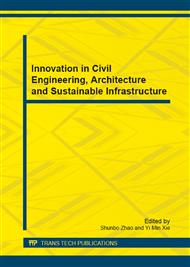p.333
p.337
p.341
p.346
p.350
p.358
p.362
p.366
p.371
Australian Seaport Infrastructure Resilience to Climate Change
Abstract:
A research project continuing at RMIT University is exploring the resilience of port structures in a changing climate. Research completed to date comprises of identifying types of port infrastructure vulnerable to climate change, establishing materials and exposure conditions, developing deterioration models based on current knowledge to simulate the effect of climate change on key port infrastructure and modeling the selected elements of infrastructure to derive outcomes which will aid in decision making in port infrastructure management. A considerable effort has been concentrated on identifying input climate data most appropriate for the models developed. The modeling approach is presented in this paper for quantitative projections of damage probability on port infrastructure taking into account the variability of material type, design considerations and environmental exposures with a changing climate. This paper provides a summary of the research undertaken in the development of material deterioration models and their responses to a changing climate load. Using climate information drawn from historical weather records and future climate projections, existing deterioration models were refined to include climate data into modeling runs in order to analyse changes to deterioration rates of different materials when impacted by a change in climate variables. Outputs from this modeling process will assist port authorities in making informed decisions on maintenance and capital budget planning allowing for impacts of climate change.
Info:
Periodical:
Pages:
350-357
Citation:
Online since:
November 2012
Keywords:
Price:
Сopyright:
© 2012 Trans Tech Publications Ltd. All Rights Reserved
Share:
Citation:


